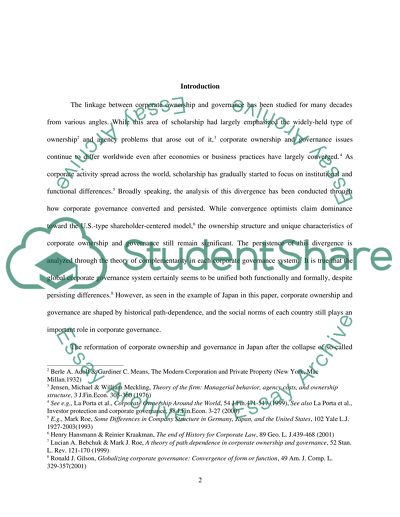Corporate governance and ownership reforms in Japan Essay. Retrieved from https://studentshare.org/law/1403205-corporate-governance-and-ownership-in-japan
Corporate Governance and Ownership Reforms in Japan Essay. https://studentshare.org/law/1403205-corporate-governance-and-ownership-in-japan.


